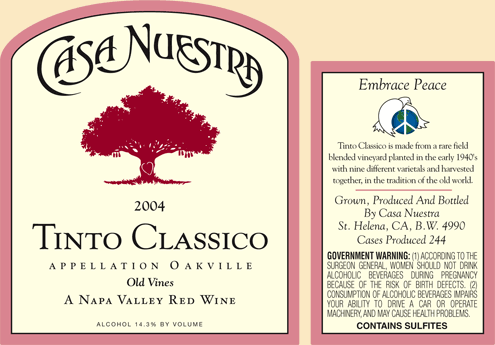|
|
Tinto Classico, Old Vines, Oakville Estate |
 |
|
Wine Details
Price:
$38.00 per bottle
Description:
This field-blended* wine offers a unique balance of bright fruit, (we get creamy raspberries and dark cherries) with a spicy pepper on the finish. At least nine varieties are planted side by side in this 1943 vineyard. The actual percentage of each contributing varietal is undetermined: Old-Clone Zinfandel, Cabernet Pfeffer, Alicante Bouschet, Carignane, Petite Sirah, Mouvedre, Refosco, Napa Gamay, and Pinot Noir. Being very Chianti in style, try it with pasta in a tomato based sauce, or a seafood paella and most especially chocolate!.
|
|
|
Reviews
|

|
|
|
Back to Casa Nuestra Winery & Vineyards information
|
|
|